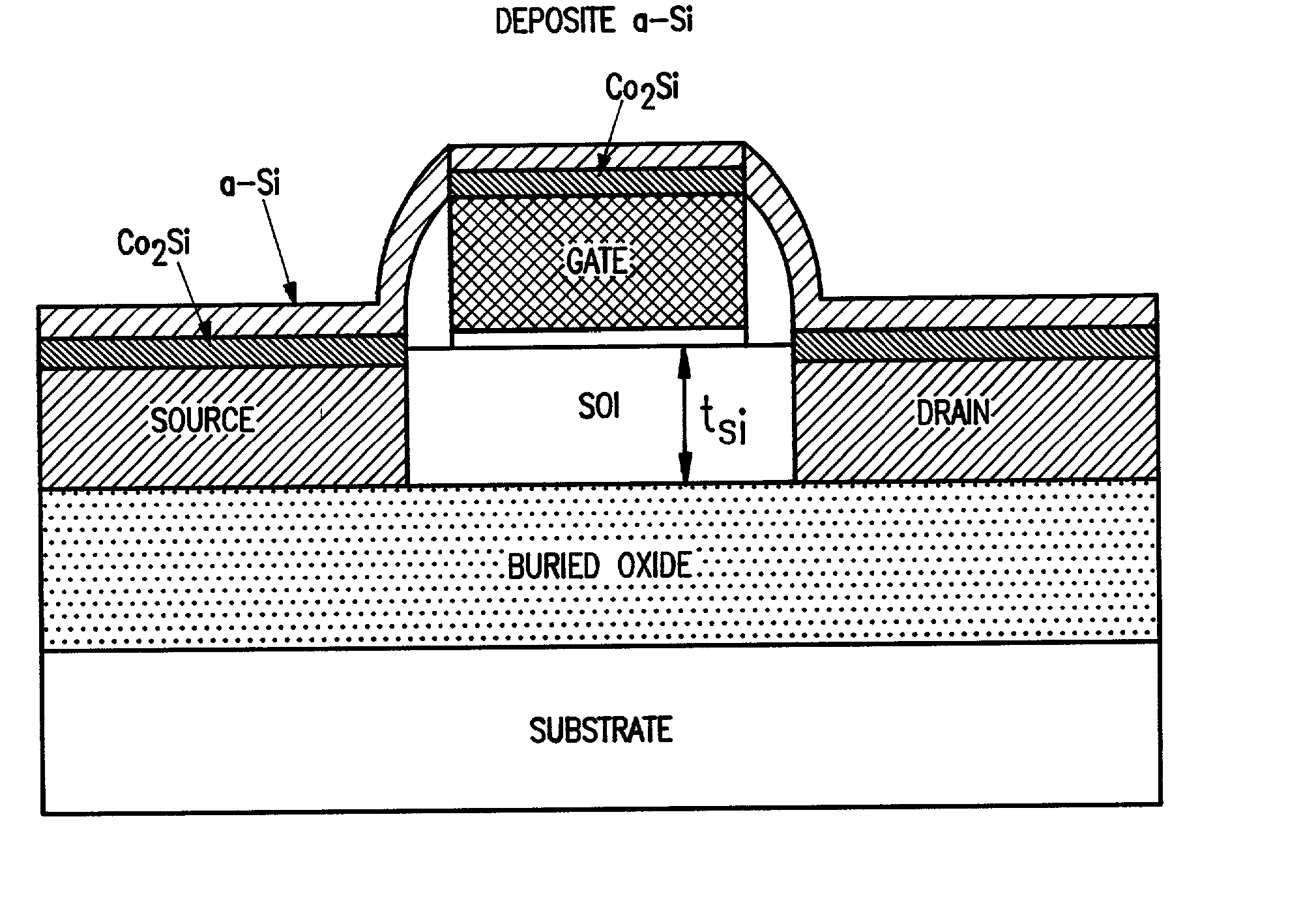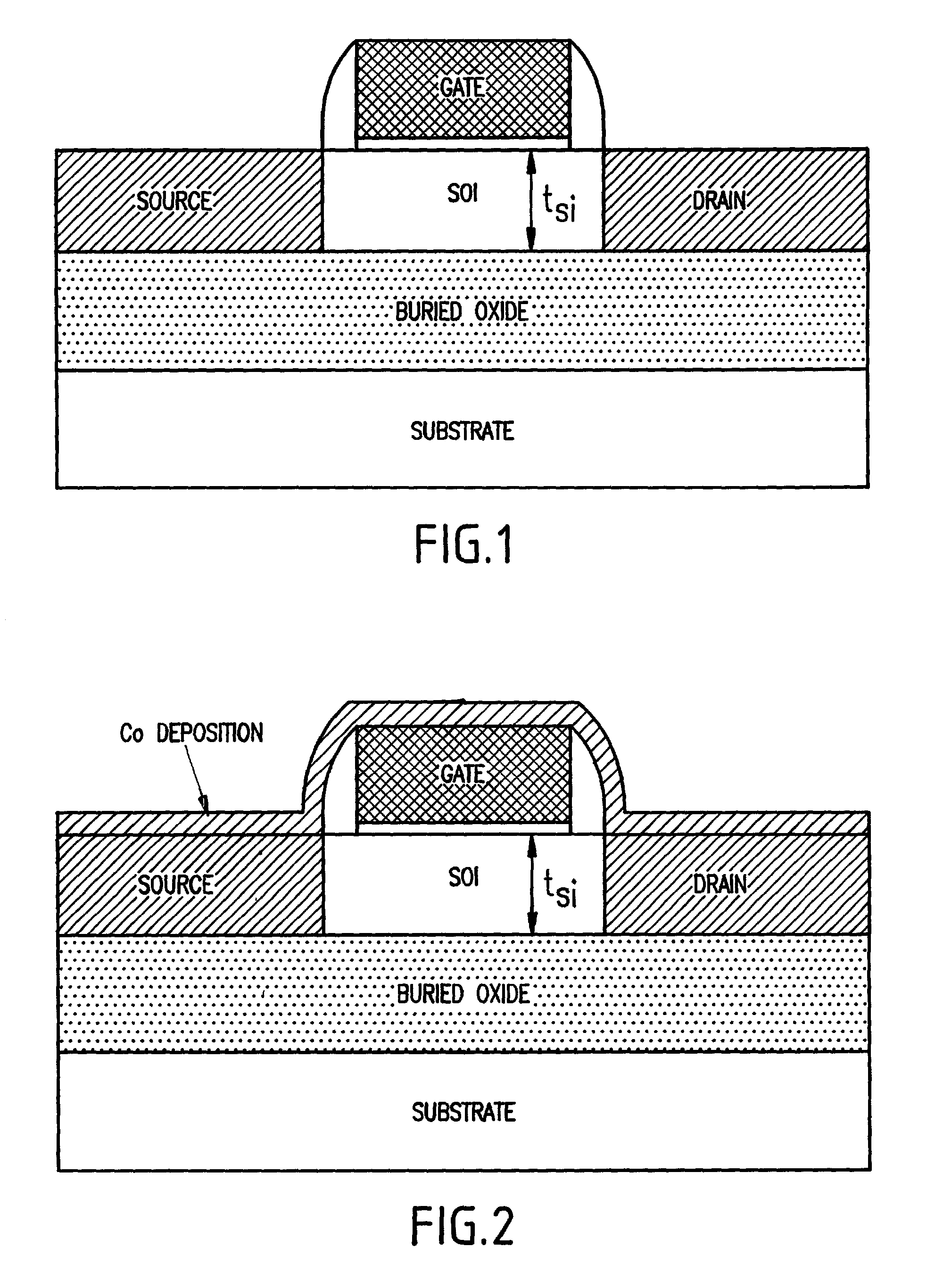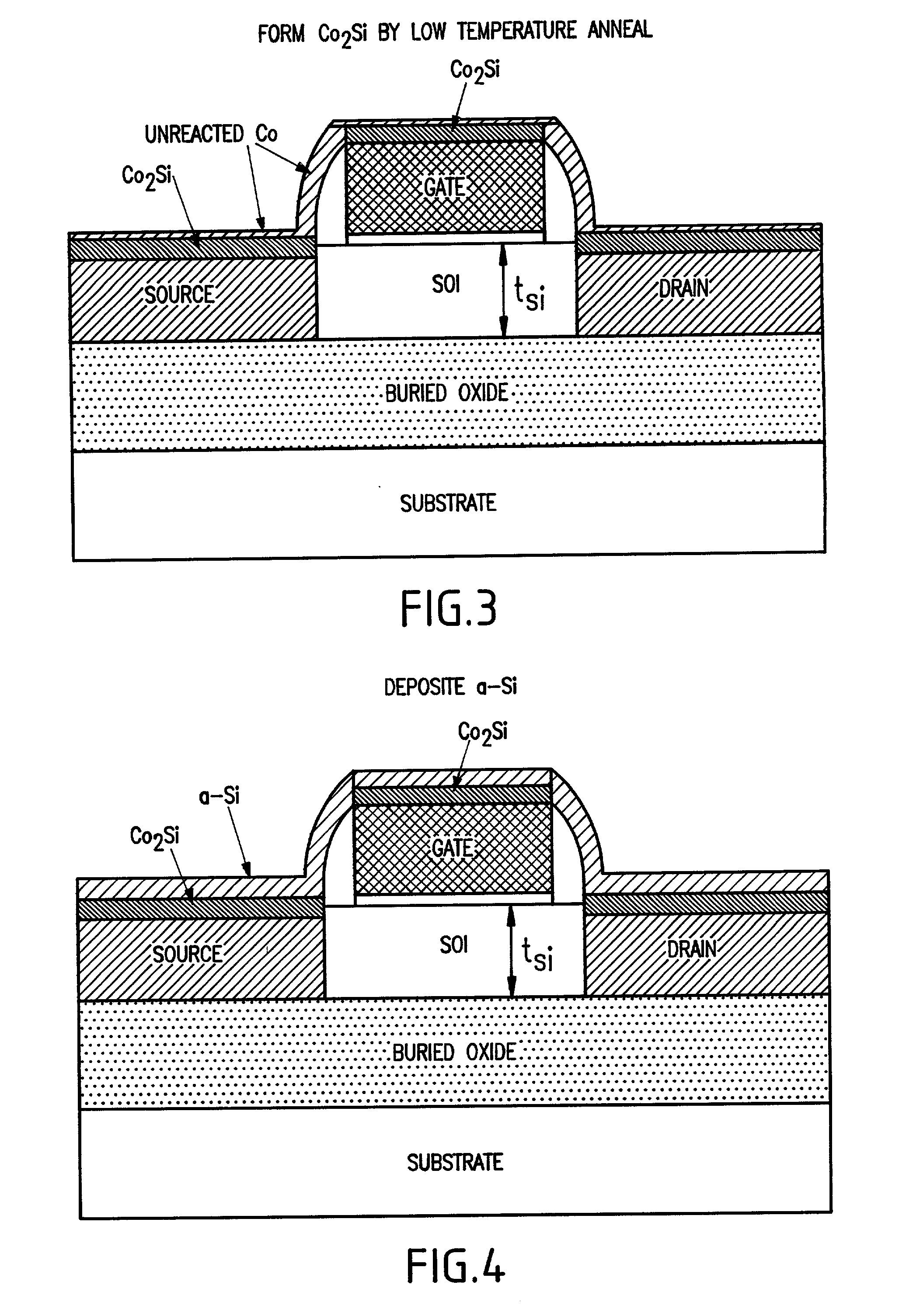Self-aligned silicide (salicide) process for low resistivity contacts to thin film silicon-on-insulator and bulk MOSFETS and for shallow Junctions
a thin film silicon-on-insulator and mosfet technology, applied in the field of self-aligned silicide process for low resistivity contacts of thin film soi mosfets and a self-aligned silicide process for shallow junctions, can solve the problems of low parasitic resistance, low source/drain series resistance, and loss of silicide layer's efficiency in reducing series resistan
- Summary
- Abstract
- Description
- Claims
- Application Information
AI Technical Summary
Problems solved by technology
Method used
Image
Examples
second embodiment
[0070] Second Embodiment
[0071] The second embodiment of the present invention employs substantially the same process as described above. However, while the process described above has been applied to Silicon-On-Insulator (SOI) MOSFETs, the process is also equally applicable to bulk MOSFETs, as discussed below.
[0072] Thus, the second embodiment uses substantially the same process. For the reader's greater clarity, the process steps are summarized below.
[0073] First, a blanket deposition of a metal such as Co, Ti or Ni, is performed. For example, the typical required film thickness for Co is about 7-8 nm. The Co deposition is followed by a TiN cap deposition of about 20 nm thick, that prevent oxidation during anneals.
[0074] Then, a first rapid thermal anneal (RTA) is performed to form the CoSi, C49 TiSi.sub.2, or NiSi phase. For example, a 525C anneal would react the deposited Co with the underlay Si, converting some of the Si into CoSi.
[0075] Then, the unreacted metal is selectively ...
PUM
| Property | Measurement | Unit |
|---|---|---|
| thickness | aaaaa | aaaaa |
| thickness | aaaaa | aaaaa |
| thickness | aaaaa | aaaaa |
Abstract
Description
Claims
Application Information
 Login to View More
Login to View More - R&D
- Intellectual Property
- Life Sciences
- Materials
- Tech Scout
- Unparalleled Data Quality
- Higher Quality Content
- 60% Fewer Hallucinations
Browse by: Latest US Patents, China's latest patents, Technical Efficacy Thesaurus, Application Domain, Technology Topic, Popular Technical Reports.
© 2025 PatSnap. All rights reserved.Legal|Privacy policy|Modern Slavery Act Transparency Statement|Sitemap|About US| Contact US: help@patsnap.com



